The Eiffel Tower’s Illuminations
Every evening, the Eiffel Tower is adorned with its golden covering and sparkles for 5 minutes every hour on the hour, while its beacon shines over Paris.
Unveiled on the 31st December 1985, invented by Pierre Bideau, an electrician and lighting engineer, it consists of 336 projectors equipped with high-pressure, yellow-orange sodium lamps.
This form of illumination, which has been met with unanimous, worldwide success, was the starting point of a nocturnal revival of monuments, in Paris as well as in the cities of France and the world.
The beams of light, directed from the bottom towards the top, illuminate the Eiffel Tower from the inside of its structure. Since 1958, by replacing the 1,290 working projectors that illuminated the Tower from the outside, they have been highlighting the fine metallic structure of the monument and illuminating the areas used by late-night visitors until the closing of the Tower to the public. In addition to the aesthetic aspect, it is equally necessary for the security of the late-night operation of the Tower.
The projectors are turned on in under 10 minutes. This is activated upon nightfall by the sensors.
In 2004, they were replaced by projectors with an electrical power of 600 watts as opposed to the previous 1KW, i.e. an energy consumption saving of around 40%. Their improved output of light preserves all the beauty of the overall appearance.
Since that time and every four years, a team of SETE technicians has replaced the 336 projector bulbs that wrap the Eiffel Tower in golden light every evening. The last operation took place in spring 2019.
Contrary to popular beliefs, the Tower’s nightly illumination, it’s golden glow, only represents about 4% of the monument’s annual energy expenses.
In December 2019, the four 2000W projectors that had illuminated the antenna since 1985 were replaced by LED versions that are 10 times less powerful and consume 10 times less energy.
In 2020, the 28 projectors that illuminate the steps in the outstretched portions of the four pillars will be replaced to reduce the installed power by 80%.
The Beacon and Sparkles for the "Countdown to the Year 2000"
On 31 December 1999 at the approach of midnight, the entire world will discover the beacon and the Tower's sparking lights.
The beacon, sending out two light beams with a reach of 80 kilometres, is composed of 4 "marine" motorised projectors. They are operated by automatically piloted computer programs. Since their rotation sweep is 90°, they are synchronized to form a double beam in a cross that pivots around 360°.
The xenon 6000 watt lamps were chosen for their longevity, around 1,200 hours. The lamps are cooled to prevent overheating and a heating system is activated when the temperatures drop below zero Centigrade whilst the lights are off.
This beacon resonates the image of Gustave Eiffel's Tower itself as a universal and symbolic landmark.
The sparkling lights are superimposed over the golden lighting, they bring the monument to life for 5 minutes every hour on the hour once the Tower has been lit up.
As part of the City of Paris emergency energy saving plan launched in September 2022, the Eiffel Tower lights will now be switched off completely from 11.45pm. Except during summer, when the Tower closes at 00:45 : the Tower lights and beacon are switched off at 1.00am, except for the sparkling lights remaining during a few minutes. A truly magical moment not to be missed!
20 000
Light bulbs
Installing the lights is about as impressive as the lighting itself :
- 25 mountain climbers for the 5 month installation
- 40 kilometers of strings of light and electrical cords
- 40,000 joints and 80,000 various metallic parts weighing 60 tons
- 230 enclosed lighting fixtures and electrical boxes
- 10,000 m² of safety nets
- 120 kilowatts of power
- Budget total: 4.55 million euros HT
Originally a temporary installation to ring in the new millennium, the Eiffel Tower’s lighting unit became a permanent fixture in 2003.
To obtain it’s sparkle effect, each side of the Tower was fitted with 5,000 metal casings containing a 6W xenon bulb, for a grand total of 20,000 lamps and 120kW of electricity.
A team of SETE technicians and rope-access specialists change an average of 300 to 400 lamps per year on the installation.
The sparkling lights are very low-energy equipment. They consume approximately 8800kWh/year, which is equivalent to the annual energy consumption of a 30m² studio apartment with 2 occupants. They represent 0.4% of the monument’s annual energy consumption.
The 20,000 light bulbs each have a low power of 6 watts and light up randomly, as each bulb is separate from the others. Furthermore, the transition of the duration of the sparkling from 10 to 5 minutes an hour in 2008 has made it possible to reduce the energy consumption and above all to extend the life of the installation by several years.
All these modernizations to the Tower’s lighting unit help to improve its energy performance, and it’s consumption has dropped by an average of 9% per year since 2016.
Sparkling Moments in the History of the Eiffel Tower
Throughout the course of its existence, the Eiffel Tower has been host to lighting effects of a festive nature. Through continual renewal of its sources of artificial illumination, the Tower has benefited from the latest innovations in lighting equipment from the very beginning – from gas to electricity, incandescent lamps to neon, passing from sodium to high-pressure, and most recently LEDs.
Because the Tower’s usual equipment was not designed for special illuminations (colors, flags, messages), these generally require external lighting to be brought in for each occasion.
- 1889: For the evening of the Tower’s inauguration, 10,000 gas street lamps accented the steeple and platforms. Two projectors on the Tower top lit up the other Parisian monuments below. These blue-white-red beacon lights were considered the most powerful in the world.
- 1900: Electricity arrives. 5,000 lamps spotlight the framework and decorative arches of the Tower.
- 1907: A six-meter tall giant clock is installed on the second floor giving time in illuminated numbers.
- 1925-1936: It was André Citroën who brought the first decorative lighting display to the Tower, composed of 250,000 colored lamps. As an ad campaign, the name Citroën sculpted in lights adorned three sides of the Tower, visible 30 kilometers away.
- 1933-1934: A 15-meter clock in diameter (offered by Citroën) tells time with light-beam minute hands.
- 1937: For the Art and Technique Exhibition, an enormous chandelier containing 10 kilometers of fluorescent tubes was installed on the first floor. Thirty naval spotlights point in air so as to wrap the Tower in white light, while the Tower’s lattice work takes on gold, blue and red reflects.
- 1958: 1,290 spots are installed on the grounds of the Champ de Mars so as to light up the Tower from below.
- 1978 Christmas: The Tower becomes a Christmas tree with the arrangement of 30,000 lamps installed on the monument.
- 1985 New Year’s Eve: Inauguration of the new lighting system, the final phase of a comprehensive restoration program, initiated by the city of Paris in 1980. It was to become the permanent gold-toned lighting system still in place today. This golden light is comprised of 350 high pressure sodium bulbs.
- April, 5th 1997: The 1,000 days to the new millennium countdown display is placed on the facade of the second floor facing Trocadero.
- 2000 - New Year’s Day: for the "Countdown to the Year 2000" and its unforgettable pyrotechnic event, the Tower unveils its 20,000 sparkling lights and displays a new beacon. The sparkling lights, always planned to be short-lived, were taken down on the 14th July 2001.
- June, 21th 2003: The Eiffel Tower is once again covered in diamond-sparkling lights that are displayed every hour on the hour for five minutes, from dusk until 2 am (1 am in winter).
- January, 24th-29th 2004: Celebration of Chinese New Year: the Eiffel Tower is dressed in red! For the Chinese New Year celebrations, a clever set of exterior projectors bathed Paris’ most famous monument in scarlet light. This began on Saturday 24th January at the end of a parade organised on the Champs-Elysées, during an illumination event in front of the French and Chinese Ministers for Culture and the Mayors of Paris and Peking. The display was left in place until the morning of the 29th January (5 days) and could be seen every evening from 5 pm to 7.30 am! This red lighting effect on the Eiffel Tower was produced in collaboration with EDF.
- May, 9th 2006: The Tower Turns Blue for the 20th Anniversary of Europe Day
- From September, 7th to October, 20th 2007: Rugby is Honoured, for the occasion of the World Rugby Cup hosted by France, the Eiffel Tower adopted the colours of rugby
From the bottom to the second floor, the Tower was bathed in green light, to represent the pitch, with two vertical beams of light and a cross-bar for the goal. A giant ball with a span of 13 metres was suspended from the second floor, approximately 80 metres from the ground bearing the official logo very clearly lit up. Lastly, a giant 120 m2 screen was set up on the first floor facing the Seine to display the results of the matches. Visitors from all over the world and Parisians alike could also enjoy the sparkling lights and the beacon, which continued to function throughout the whole operation. - From June, 30th to December, 31st 2008: The Eiffel Tower in European colours.
To celebrate France’s Presidency of the European Union (1st July – 31st December 2008), the Eiffel Tower, in cooperation with the Mayor of Paris, paid homage to Europe. Every evening at nightfall, the Tower was decked out in blue light, decorated with 12 yellow stars to represent the European flag. The sparkling lights continued to glitter for the first 5 minutes of every hour. - From October, 22nd to December, 31st 2009: The Tower celebrates its 120th birthday by offering a light show every evening.
- May 28 to June 2, 2013, and June 15-16, 2013: The Tower was illuminated with the colors of South Africa for Nelson Mandela International Day.
- September 30, 2015: Every evening of Paris Fashion Week 2015, the Eiffel Tower graced the capital with a light show on the theme “fashion loves Paris.”
- Every October: Each year, the Eiffel Tower is lit up in pink for Breast Cancer Awareness Month, also known as Pink October, to support breast cancer research and those battling the disease.
- June 13, 2016: The Eiffel Tower paid homage to the victims of the homophobic shooting in Orlando by gracing its structure with a rainbow flag.
- June-July 2016: The Tower celebrated the 2016 European Football Championship that was held in France. For each match, it was lit up in the colors of the country that received the most support on social media.
- July 19, 2016: The Eiffel Tower showed its support for France and paid tribute to the victims of the Nice terrorist attacks by donning the colors of the French flag: blue, white, and red.
- November 4, 2016: The Eiffel Tower was illuminated in green to celebrate the definitive implementation of the Paris Climate Agreement.
- February 3, 2017: The Tower was adorned in the colors of the Olympic Games to celebrate Paris’ successful bid to host them, along with the inscription “Paris 2024.”
- September 28, 2017: To celebrate the milestone of 300 million visitors to the Tower since its construction, we put on a light show entitled “Thanks 300 million”.
- December 8, 2017: Three days after Johnny Hallyday’s death, the Eiffel Tower paid homage to the singer by displaying “Thanks Johnny” on a silver illumination.
- May 15-17, 2019: To celebrate the Eiffel Tower’s 130th anniversary, an unprecedented light show was designed by Bruno Seillier and its exceptional visuals effects displayed at dusk.
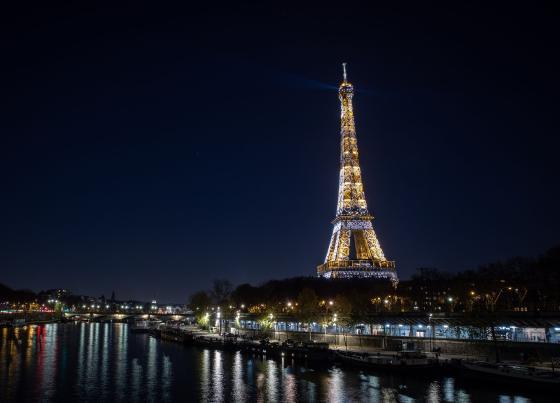
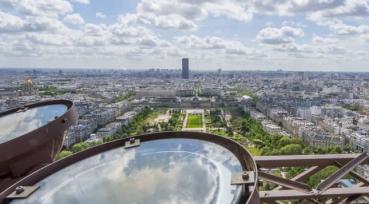
_0_1eae0.jpg)
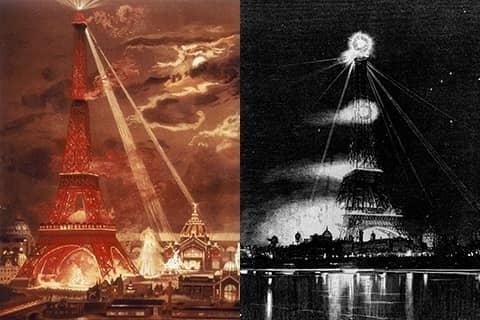
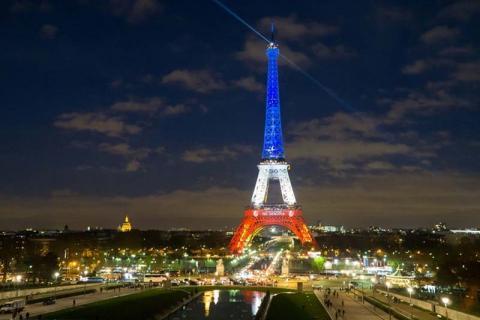
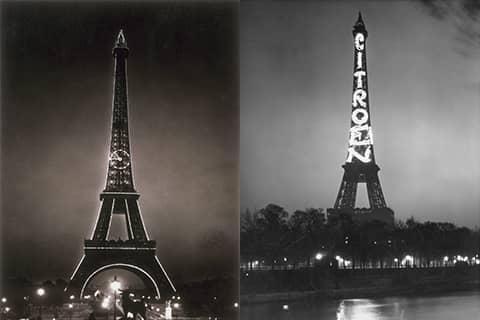
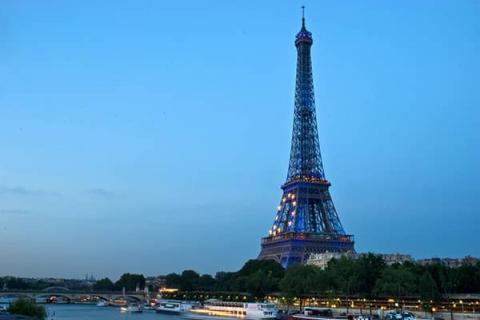
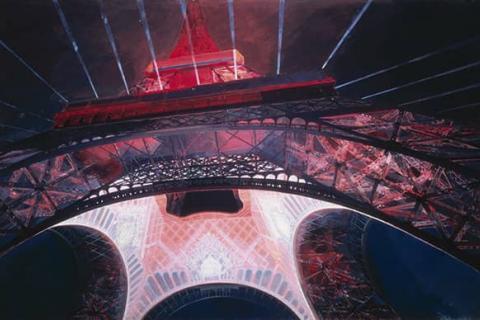
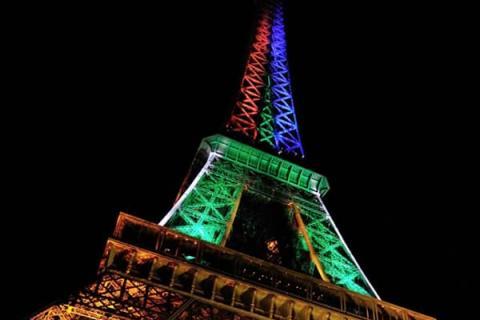
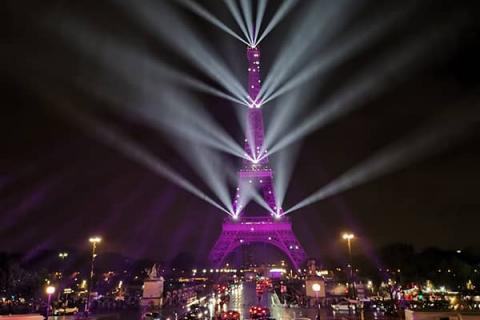
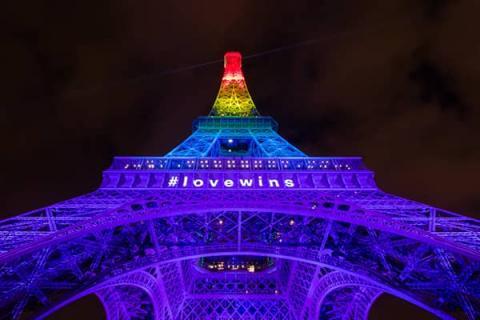
_0_19d67.jpg)